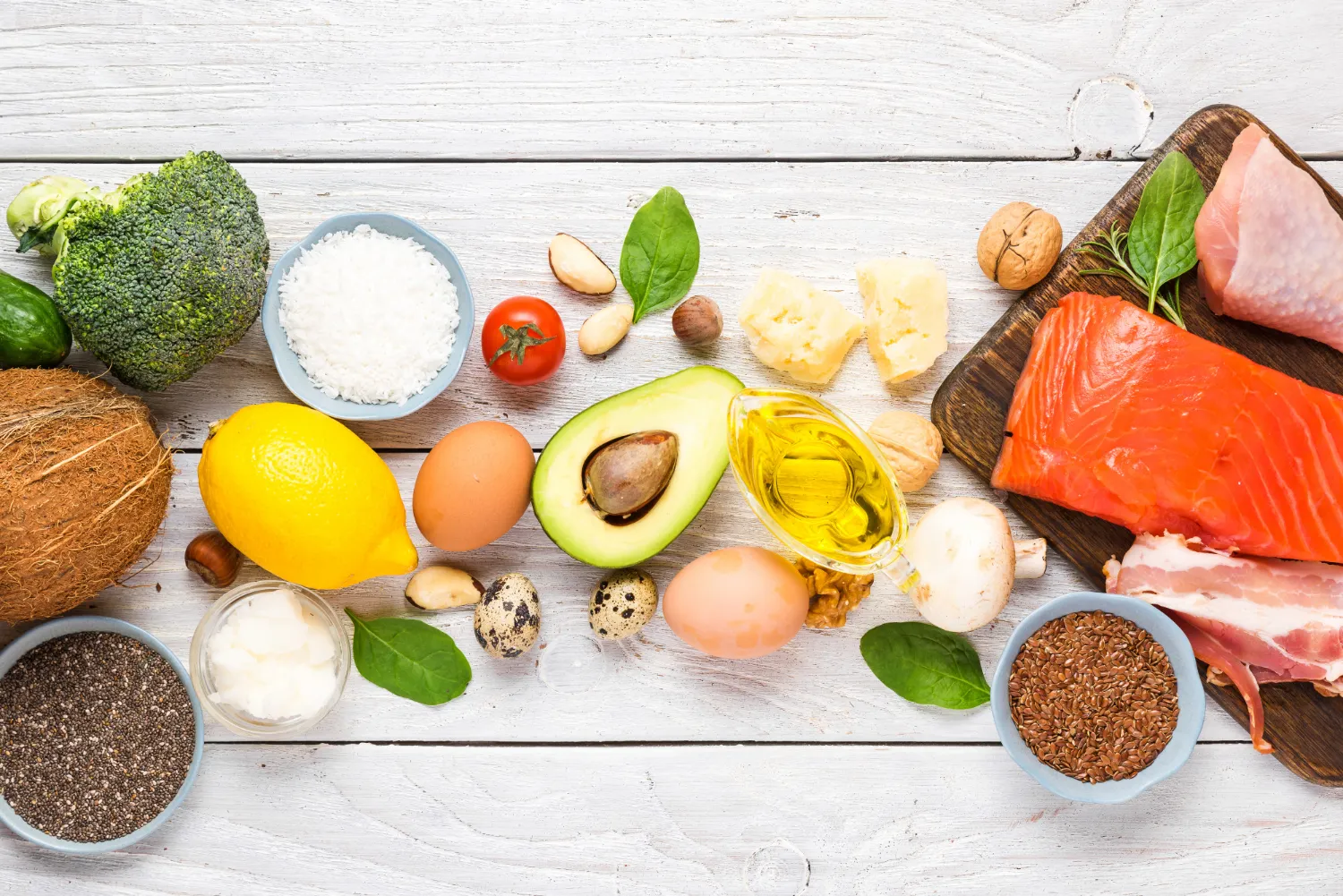Weight loss that fits your goals and your life.
Get your plan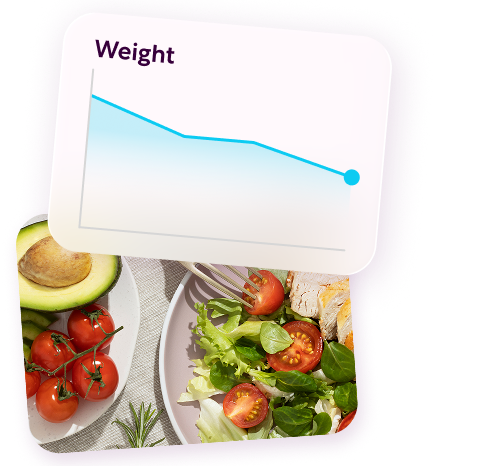
Weight loss that fits your goals and your life.
Get your plan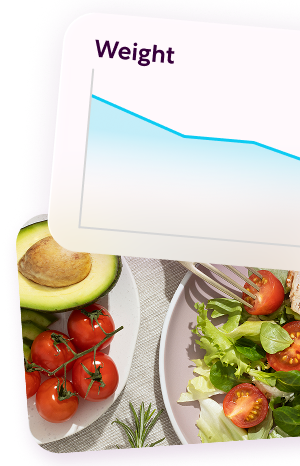
The Atlantic diet originates from the coastal regions of northwestern Spain and northern Portugal, where generations have thrived on an abundance of seafood, hearty root vegetables, and community-centered meals.
Unlike its Mediterranean counterpart, this eating pattern incorporates potatoes, dairy, and moderate amounts of red meat, while maintaining a similar dietary foundation: olive oil, fresh fish, and seasonal produce.
Recent research published reveals that following the Atlantic diet for six months reduces metabolic syndrome risk, while helping you lose weight and lower cholesterol levels.
This culturally-rooted approach offers sustainable nutrition that supports cardiovascular health, bone density, and metabolic flexibility without restrictive rules or elimination protocols, which may help you maintain good health through hormonal transitions in your 40s and beyond.
What Is the Atlantic Diet and Why Is It Gaining Popularity?
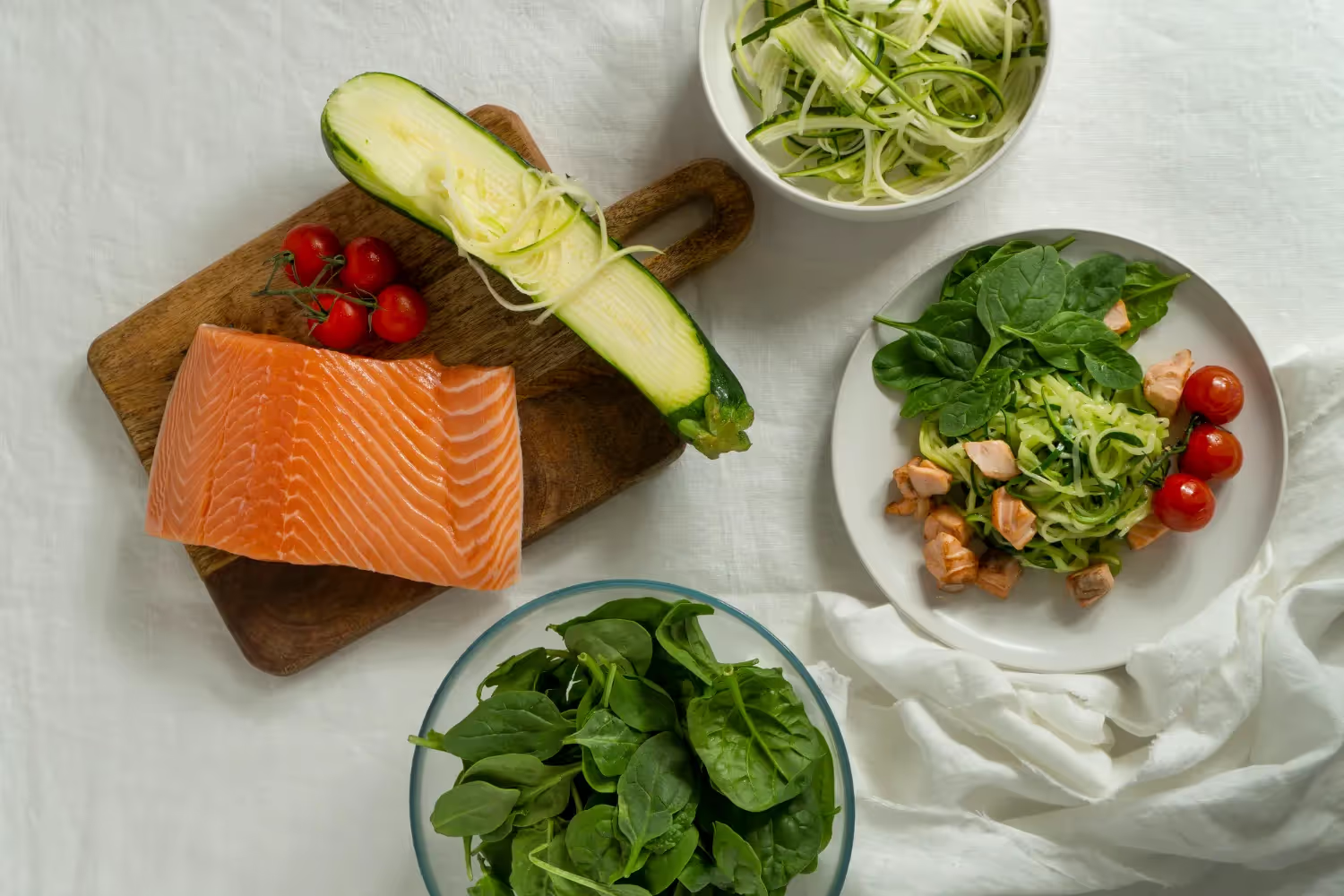
The diet gained scientific attention in recent years for demonstrating measurable improvements in cholesterol levels and waist measurements within six months. You’ll find it particularly appealing because of its flexibility around starchy foods and dairy, which supports energy needs during perimenopause and menopause while providing calcium for bone health.
Core Principles of the Atlantic Diet
The Atlantic diet prioritizes locally sourced, minimally processed foods. Fresh fish and shellfish provide omega-3 fatty acids that support brain function and reduce inflammation. Root vegetables, such as potatoes and turnips, serve as primary energy sources, providing resistant starch that nourishes beneficial gut bacteria.
Brassica vegetables, including cabbage, kale, and broccoli, contribute anti-inflammatory compounds that are particularly valuable for managing hormonal fluctuations. Olive oil remains the primary cooking fat, while modest amounts of red wine are often served with meals.
The approach emphasizes slow cooking methods, such as stewing and braising, which break down tough fibers and enhance nutrient absorption.
Your 7-Day Atlantic Diet Plan
This meal plan provides approximately 1,800-2,000 calories daily, with a balanced mix of macronutrients.
Each day emphasizes different Atlantic staples while maintaining a consistent intake of omega-3s and anti-inflammatory foods.
Day 1 — Fish, Potatoes, and Olive Oil
Start your morning with scrambled eggs cooked in olive oil alongside roasted potato wedges and sliced tomatoes. For lunch, enjoy grilled sardines served over boiled new potatoes with steamed green beans, drizzled with extra-virgin olive oil. Finally, for dinner, enjoy pan-seared cod served with mashed potatoes enriched with milk and olive oil, accompanied by sautéed spinach with garlic.
If you’re feeling hungry, you can eat a mid-afternoon snack of whole grain bread with olive tapenade rounds out the day.
This combination provides approximately 1,850 calories with 25% protein, 35% carbohydrates, and 40% healthy fats.
Day 2 — Sardines, Cabbage, and Beans
For breakfast, combine soft-boiled eggs with whole-grain toast and fresh orange slices. You can have sardine and white bean salad with shredded raw cabbage, dressed in olive oil and lemon, for lunch. For a hassle-free dinner, prepare slow-cooked cabbage rolls filled with ground pork and rice, served with steamed broccoli. You can add a portion of aged cheese with walnuts if you prefer.
The day delivers roughly 1,900 calories, emphasizing omega-3s from sardines and fiber from beans and brassicas, with macronutrients distributed as roughly 20% protein, 40% carbohydrates, and 40% fats.
Day 3 — Shellfish and Whole Rye Bread
Begin the day with Greek yogurt topped with chopped walnuts and dried figs. For lunch, enjoy steamed mussels in a white wine broth, accompanied by crusty rye bread for dipping, and end the day by munching on roasted salmon with herb-crusted potatoes and braised leeks. You can snack on fresh pear slices with mild goat cheese in between meals.
Shellfish is an excellent source of zinc and selenium while supporting thyroid function, which, according to studies, is particularly vulnerable during menopause and the years after. The rye bread contributes B vitamins and sustained energy release.
Your total daily calorie intake should fall roughly around 1,820 calories with 26% protein, 34% carbohydrates, and 40% fats from mineral-rich seafood and ancient grains.
Day 4 — Steamed Greens, Grilled Trout, and Yogurt

We’ll bring back another staple of this diet with thick Greek yogurt. But this time, add honey and crushed almonds along with whole-grain toast. Have grilled trout for lunch, served with steamed collard greens and boiled fingerling potatoes, all dressed in olive oil. Dinner features braised chicken thighs accompanied by root vegetables and wilted chard. For snacks, have fresh berries with a small portion of aged Manchego cheese.
Trout provides high-quality protein and omega-3 fatty acids, while leafy greens supply folate and iron.
Overall, this combination supports energy production and the formation of red blood cells, providing approximately 1,880 calories with 24% protein, 36% carbohydrates, and 40% fat.
Day 5 — Atlantic Soup, Boiled Eggs, and Oranges
We won’t have Greek yogurt for your fifth day. Instead, breakfast for Day 5 consists of soft-boiled eggs served over toasted sourdough with an olive oil drizzle. Lunch centers on a traditional Galician soup, featuring a rich broth with potatoes, turnip greens, and chorizo, and dinner includes baked mackerel accompanied by roasted sweet potatoes and sautéed kale. Fresh orange segments with toasted chestnuts are our snacks for the day.
This hearty combination of meals provides warming comfort foods typical of Atlantic coastal regions. The soup provides complex carbohydrates and iron, while oranges offer vitamin C to support enhanced absorption.
Daily calories reach approximately 1,950 with 23% protein, 39% carbohydrates, and 38% fats supporting sustained energy.
Day 6 — Cod, Turnips, and Roasted Vegetables
Seize the second-to-last day of the seven-day meal plan with scrambled eggs mixed with fresh herbs and served with roasted potato rounds.
For lunch, prepare a salt cod salad with turnip and carrot ribbons, dressed in an olive oil vinaigrette, and conclude with braised beef accompanied by roasted Brussels sprouts and parsnips for dinner. Whole-grain crackers with sardine paste and cucumber slices are a great choice for snacks on this day.
Cod provides lean protein, while turnips offer glucosinolates that, according to studies, support liver detoxification. Root vegetables supply complex carbohydrates and fiber for digestive health.
The day totals approximately 1,870 calories, comprising 25% protein, 37% carbohydrates, and 38% fat, with an emphasis on traditional preservation methods and seasonal vegetables.
Day 7 — Mackerel with Lentils and Fruit
For the seventh and final day, combine Greek yogurt with stewed apples and toasted oats for breakfast, eat a warm lentil salad with grilled mackerel and wilted arugula for lunch, and slow-cooked pork shoulder with white beans and roasted fennel to end the day. Fresh grapes paired with aged sheep's cheese are a perfect snack to complement the entire day’s meals.
Mackerel delivers the highest omega-3 content among common fish, which research shows is good for vasomotor symptoms during menopause, while lentils provide plant protein and folate. This combination supports cardiovascular health and stable blood sugar levels throughout the day.
The weekly finale provides 1,920 calories, comprising 24% protein, 38% carbohydrates, and 38% fats.
Cultural and Lifestyle Factors That Enhance the Diet
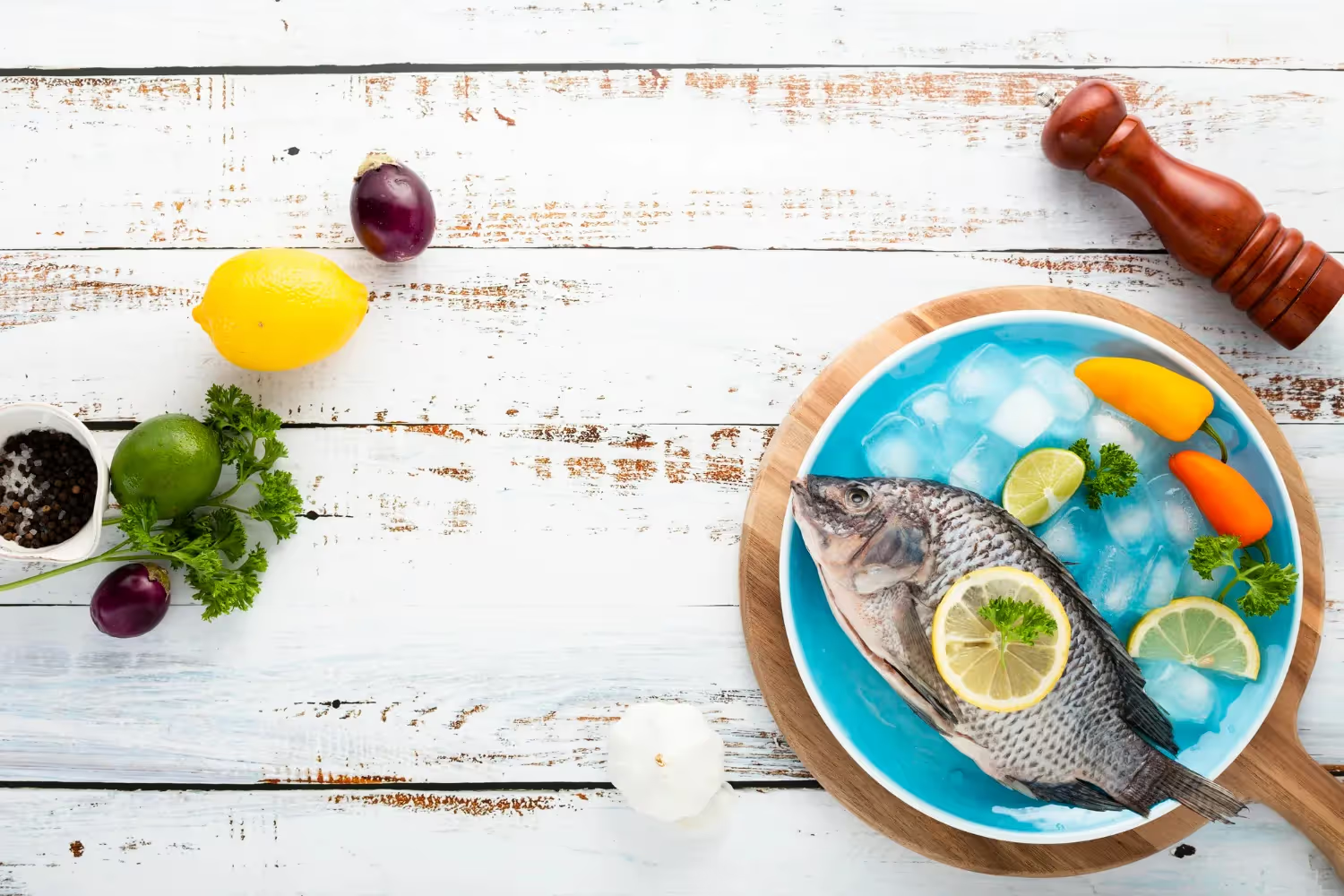
Eating Slowly and in Community
Atlantic coastal communities view meals as social gatherings. Families gather around tables to spend time with each other while sharing platters of fish, vegetables, and bread. Studies have proven that this approach leads to a generally healthier lifestyle, among other positive effects.
Cooking With Local Ingredients
Traditional Atlantic cooks select ingredients based on seasonal availability and regional specialties. Coastal markets offer fresh catch alongside root vegetables grown in nearby fields. Research has shown that this approach maximizes nutrient density and freshness from the food you eat.
So, you don’t necessarily have to eat what we recommended. You can look for alternatives in local fish markets and farmers' markets, focusing on seasonal vegetables. The practice is good for your health and the local economy.
Daily Movement and Outdoor Time
Atlantic coastal living naturally incorporates physical activity through fishing, farming, and walking on varied terrain. So they don’t just eat healthier, they’re also more active by default. You can mimic this and enjoy similar health benefits by incorporating daily movement patterns, such as taking leisurely strolls along coastlines or through villages. This integrated approach to exercise supports bone density, cardiovascular health, and mood regulation without requiring structured gym routines.
Regular exposure to natural light supports vitamin D production and regulates the circadian rhythm, which in turn improves sleep quality and hormonal balance.
Recap — What the 7-Day Atlantic Diet Plan Supports
Heart and Brain Health Through Omega-3s
The Atlantic diet provides consistent omega-3 fatty acid intake through varied fish consumption rather than relying on supplements alone. Cold-water species, such as sardines, mackerel, and cod, deliver EPA and DHA in bioavailable forms that support cardiovascular function and cognitive health.
Studies show that these healthy fats help reduce inflammation markers associated with heart disease while supporting the integrity of brain cell membranes. The anti-inflammatory effects also benefit joint health and may reduce arthritis symptoms, among other health complications associated with menopause.
Digestive and Metabolic Support with Whole Foods
The diet’s emphasis on whole grains, root vegetables, and fermented dairy products supports digestive health through the consumption of prebiotic fiber and beneficial bacteria. Resistant starch from cooled potatoes feeds gut microbiome diversity while promoting stable blood sugar levels. The combination of protein, healthy fats, and complex carbohydrates at each meal prevents energy crashes and sugar cravings.
Hormonal and Longevity Benefits for Midlife Women
The Atlantic diet's inclusion of calcium-rich dairy, iron from red meat, and antioxidants from vegetables addresses specific nutritional needs during perimenopause and menopause. Adequate protein intake supports muscle mass maintenance, while healthy fats provide building blocks for hormone production. The anti-inflammatory nature of the diet may help reduce hot flashes and support mood stability.
Overall, the sustainable, culturally-rooted approach promotes long-term adherence without restricting yourself, and, of course, the rebound cycles, common with trendy diets.
Weight loss that fits your goals and your life.
Get your plan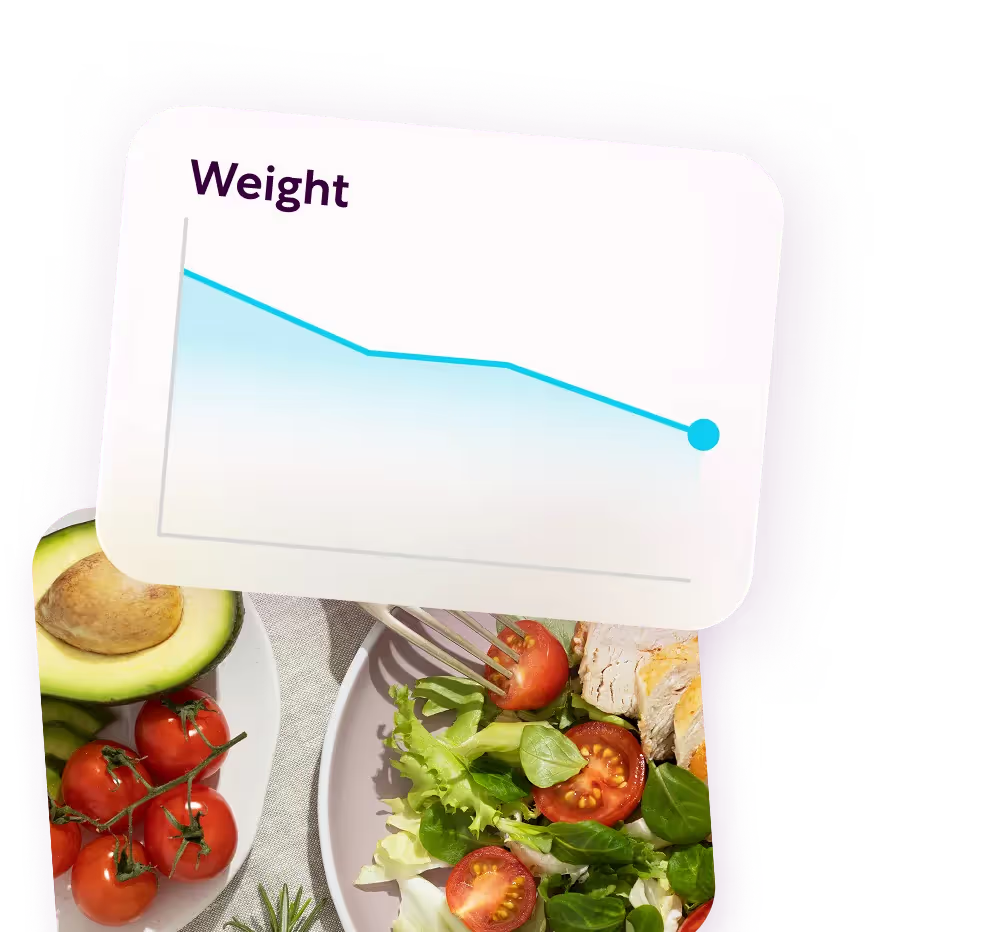
Sources
- Cambeses-Franco, Cristina, et al. "Traditional Atlantic Diet and Its Effect on Health and the Environment: A Secondary Analysis of the GALIAT Cluster Randomized Clinical Trial." JAMA Network Open, vol. 7, no. 2, 2024, p. e2354473, https://doi.org/10.1001/jamanetworkopen.2023.54473.
- "Thyroid Function After Menopause: Is There Any Concern in Thyroidology?" Revista Da AssociaçãO MéDica Brasileira, vol. 70, no. 12, 2024, p. e7012EDI, https://doi.org/10.1590/1806-9282.7012EDI.
- Nho, C W, and E Jeffery. “The synergistic upregulation of phase II detoxification enzymes by glucosinolate breakdown products in cruciferous vegetables.” Toxicology and applied pharmacology vol. 174,2 (2001): 146-52. doi:10.1006/taap.2001.9207
- Mohammady, Mina, et al. "Effect of Omega-3 Supplements on Vasomotor Symptoms in Menopausal Women: A Systematic Review and Meta-analysis." European Journal of Obstetrics & Gynecology and Reproductive Biology, vol. 228, 2018, pp. 295-302, https://doi.org/10.1016/j.ejogrb.2018.07.008.
- M Dunbar, R I. "Breaking Bread: The Functions of Social Eating." Adaptive Human Behavior and Physiology, vol. 3, no. 3, 2017, p. 198, https://doi.org/10.1007/s40750-017-0061-4.
- Lucan, Sean C. "Local Food Sources to Promote Community Nutrition and Health: Storefronts Businesses, Farmers’ Markets, and a Case For Mobile Food Vending." Journal of the Academy of Nutrition and Dietetics, vol. 119, no. 1, 2018, p. 39, https://doi.org/10.1016/j.jand.2018.09.008.
- Swanson, Danielle, et al. "Omega-3 Fatty Acids EPA and DHA: Health Benefits Throughout Life." Advances in Nutrition, vol. 3, no. 1, 2012, p. 1, https://doi.org/10.3945/an.111.000893.
FAQs
How is the Atlantic Diet different from the Mediterranean Diet?
While they share many principles like a focus on olive oil, fresh vegetables, and fish, the Atlantic Diet has key differences. It traditionally includes a higher intake of local fish (like cod), potatoes, legumes, and moderate amounts of dairy and red meat, reflecting the specific culinary traditions of Northern Portugal and Northwestern Spain. The Mediterranean Diet is a broader concept covering several countries with more emphasis on nuts, seeds, and a wider variety of grains.
How does the Atlantic Diet specifically benefit women over 40?
The Atlantic Diet is particularly beneficial for women over 40 as it addresses common health concerns associated with perimenopause and menopause. Its high content of omega-3 fatty acids from fish supports heart and brain health, while calcium-rich dairy helps maintain bone density. Furthermore, the abundance of fiber from vegetables and legumes aids in weight management and helps stabilize blood sugar levels, which can fluctuate during this life stage.
Can you lose weight on the Atlantic Diet?
Yes, weight loss is a common and healthy outcome of following the Atlantic Diet. It's not a restrictive "diet" but a sustainable lifestyle focused on whole, nutrient-dense foods. The high fiber and protein content promotes satiety, helping you feel fuller for longer and reducing overall calorie intake naturally. By focusing on whole foods and minimizing processed items, it supports a healthy metabolism and gradual, sustainable weight management.
What are some easy food substitutions I can make in the meal plan?
Flexibility is key to sticking with any healthy eating pattern. If a specific ingredient in the meal plan isn't available, you can easily make swaps. For example: Fish: You can substitute cod or hake with any other flaky white fish like haddock, or even oily fish like salmon or sardines. Vegetables: Feel free to swap seasonal vegetables. If the plan calls for bell peppers, you can use zucchini, broccoli, or asparagus. Legumes: If you don't have lentils, you can use chickpeas, cannellini beans, or black beans.
Is the Atlantic lifestyle just about food, or are there other components?
The health benefits of the Atlantic lifestyle extend beyond just the diet. It's a holistic approach that also emphasizes regular, moderate physical activity (like daily walks), preparing and eating meals with family and friends (which reduces stress and improves social connection), and choosing fresh, local, and seasonal produce whenever possible. Combining the meal plan with these lifestyle factors will yield the best results for your overall well-being.




